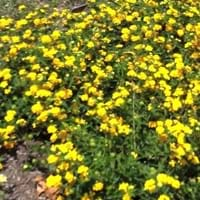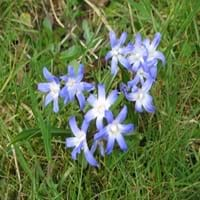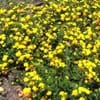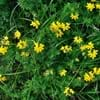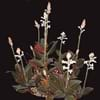Life Span
Perennial
Perennial
Type
Tender Perennial
Bulb or Corm or Tuber
Origin
South America, Argentina, Brazil, Chile
Mediterranean, Turkey
Types
big-sage, big-sage,white-sage
Not Available
Habitat
open Woodlands, Semi arid regions, Subtropical climates
meadows, Terrestrial
USDA Hardiness Zone
8-15
3-9
Sunset Zone
H1, H2, 6, 7, 8, 9, 10, 11, 12, 13, 14, 15, 16, 17, 18, 19, 20, 21, 22, 23, 24
21,22
Habit
Oval or Rounded
Clump-Forming
Minimum Height
Not Available
Minimum Width
Not Available
Flower Color
Gold
White, Blue, Pink, Violet
Flower Color Modifier
Bicolor
Bicolor
Fruit Color
Blue, Black
Not Available
Leaf Color in Spring
Dark Green
Green
Leaf Color in Summer
Dark Green
Light Green
Leaf Color in Fall
Dark Green
Several shades of Green
Leaf Color in Winter
Light Green
Light Green
Leaf Shape
Oval with toothed margin
Long Linear
Plant Season
Spring, Summer, Fall, Winter
Spring, Winter
Sunlight
Full Sun, Partial Sun
Full Sun, Partial Sun
Type of Soil
Clay, Loam, Sand
Loam
The pH of Soil
Acidic, Neutral, Alkaline
Acidic, Neutral, Alkaline
Soil Drainage
Average
Well drained
Bloom Time
Indeterminate
Early Spring, Late Winter
Tolerances
Drought
Drought
Where to Plant?
Container, Ground
Container, Ground, Pot
How to Plant?
Stem Cutting
From bulbs, Seedlings
Plant Maintenance
Medium
Medium
Watering Requirements
Does not require regular watering
Average Water Needs, Do Not over Water, Do not water frequently, Keep the ground moist but not water-logged, Never Over-water
In Summer
Lots of watering
Lots of watering
In Spring
Moderate
Moderate
In Winter
Average Water
Average Water
Soil pH
Acidic, Neutral, Alkaline
Acidic, Neutral, Alkaline
Soil Type
Clay, Loam, Sand
Loam
Soil Drainage Capacity
Average
Well drained
Sun Exposure
Full Sun, Partial Sun
Full Sun, Partial Sun
Pruning
Remove damaged leaves, Remove dead branches, Remove dead leaves
Remove damaged leaves, Remove dead branches, Remove dead leaves
Fertilizers
All-Purpose Liquid Fertilizer
All-Purpose Liquid Fertilizer
Pests and Diseases
Red blotch, Whiteflies
Red blotch
Plant Tolerance
Drought
Drought
Flower Petal Number
Single
Single
Fragrant Bark/Stem
Yes
No
Foliage Texture
Medium
Fine
Foliage Sheen
Matte
Matte
Attracts
Butterflies
Bees, Flying insects
Allergy
Skin irritation
Skin rash
Aesthetic Uses
Not Available
Beautification, Bouquets, Ground Cover, Showy Purposes
Beauty Benefits
Not Available
Not Available
Environmental Uses
Air purification
Air purification
Medicinal Uses
anti-cancer, Antirheumatic, Antiulcerogenic, Malaria
No Medicinal Use
Part of Plant Used
Leaves
Flowers
Other Uses
Showy Purposes
Decoration Purposes, Showy Purposes, Used as Ornamental plant
Used As Indoor Plant
Yes
Yes
Used As Outdoor Plant
Yes
Yes
Garden Design
Bedding Plant, Container, Feature Plant, Foundation, Hanging Basket, Mixed Border, Topiary / Bonsai / Espalier, Tropical
Alpine, Container, Foundation, Lawns and Turf, Mixed Border, Rock Garden / Wall, Wildflower
Botanical Name
LANTANA camara 'New Gold'
CHIONODOXA
Common Name
Lantana, New Gold Lantana
Chionodoxa, Glory-of-the-Snow
In Hindi
new gold lantana
Chionodoxa
In German
Wandelröschen
Chionodoxa
In French
Lantana camara
Chionodoxa
In Spanish
Lantana camara
Chionodoxa
In Greek
Lantana camara
Chionodoxa
In Portuguese
Lantana camara
Chionodoxa
In Polish
Lantana pospolita
Chionodoxa
In Latin
Lantana camara
Chionodoxa
Phylum
Magnoliophyta
Platyhelminthes
Class
Magnoliopsida
Cestoda
Family
Verbenaceae
Liliaceae
Clade
Angiosperms, Asterids, Eudicots
Angiosperms, Monocots
Tribe
Not Available
Not Available
Subfamily
Not Available
Not Available
Season and Care of New Gold Lantana and Chionodoxa
Season and care of New Gold Lantana and Chionodoxa is important to know. While considering everything about New Gold Lantana and Chionodoxa Care, growing season is an essential factor. New Gold Lantana season is Spring, Summer, Fall and Winter and Chionodoxa season is Spring, Summer, Fall and Winter. The type of soil for New Gold Lantana is Clay, Loam, Sand and for Chionodoxa is Loam while the PH of soil for New Gold Lantana is Acidic, Neutral, Alkaline and for Chionodoxa is Acidic, Neutral, Alkaline.
New Gold Lantana and Chionodoxa Physical Information
New Gold Lantana and Chionodoxa physical information is very important for comparison. New Gold Lantana height is Not Available and width Not Available whereas Chionodoxa height is 10.20 cm and width 5.10 cm. The color specification of New Gold Lantana and Chionodoxa are as follows:
New Gold Lantana flower color: Gold
New Gold Lantana leaf color: Dark Green
Chionodoxa flower color: White, Blue, Pink and Violet
- Chionodoxa leaf color: Green
Care of New Gold Lantana and Chionodoxa
Care of New Gold Lantana and Chionodoxa include pruning, fertilizers, watering etc. New Gold Lantana pruning is done Remove damaged leaves, Remove dead branches and Remove dead leaves and Chionodoxa pruning is done Remove damaged leaves, Remove dead branches and Remove dead leaves. In summer New Gold Lantana needs Lots of watering and in winter, it needs Average Water. Whereas, in summer Chionodoxa needs Lots of watering and in winter, it needs Average Water.
